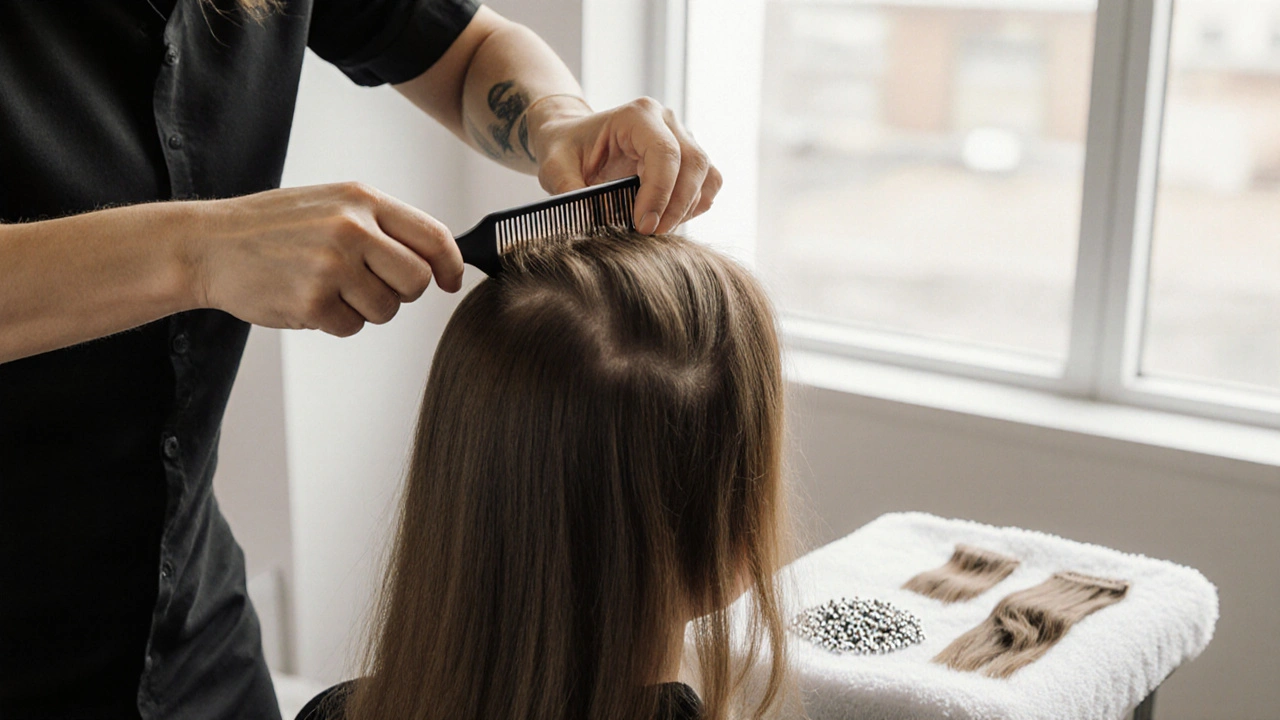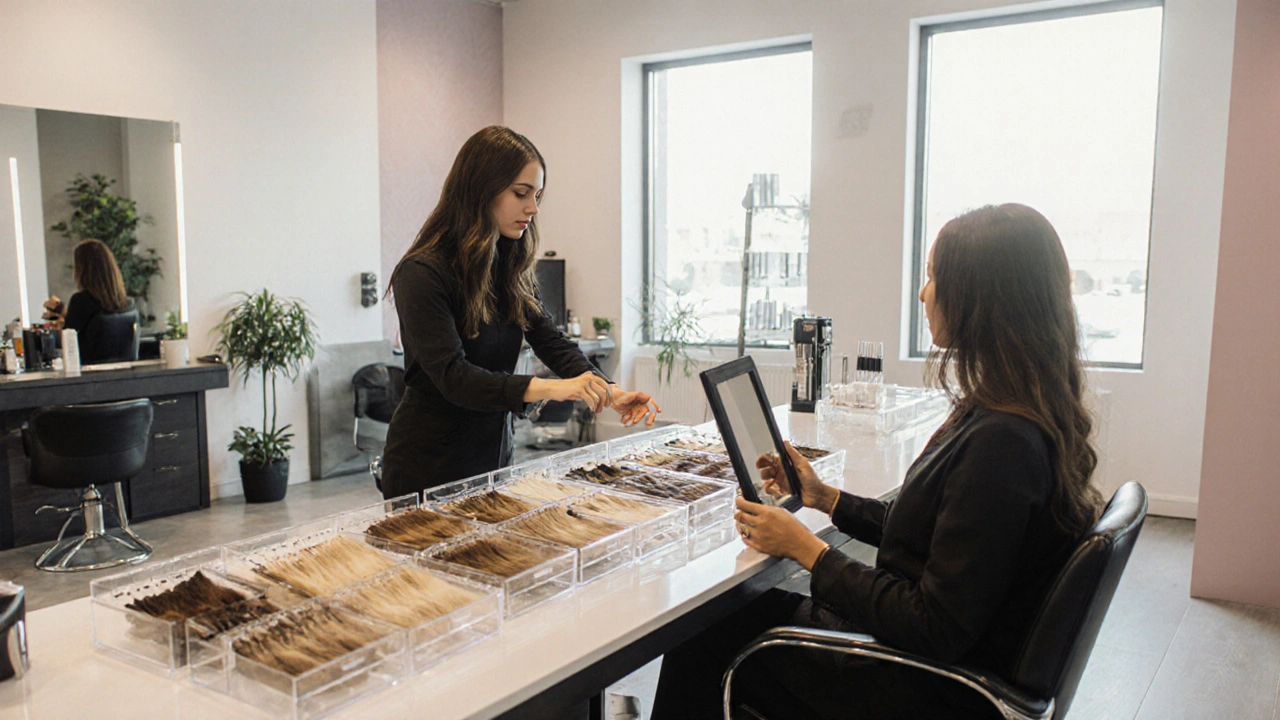Thinking about adding length, volume, or a splash of color without waiting months for growth? Hair extensions can give you that instant boost, but not all methods work the same way. Below we break down the four most common styles—clip‑ins, tape‑ins, micro‑beads, and sew‑ins—so you can pick the one that fits your hair type, budget, and daily routine.
Clip‑ins are the go‑to for beginners. They come in a tray of small wefts with metal clips that snap onto your natural hair. You can put them in and take them out in minutes, making them perfect for a night out or a weekend event. They generally cost less than salon‑bonded options, but the clips can sometimes show if you wear a heavy ponytail.
Tape‑ins use a double‑sided medical tape to stick thin wefts to your hair. A professional will apply them in sections, and they can last 6–8 weeks with proper care. The flat tape keeps the extensions undetectable, even when you pull hair back. The downside? You’ll need a stylist to replace them when they start to slip, and you can’t remove them at home.
Micro‑bead (or micro‑loop) extensions involve tiny beads that clamp the extension to a small strand of your natural hair. The beads are clamped with a plier, so there’s no heat or glue involved. This method works well for fine or medium hair because the beads are lightweight. You can adjust the length by moving beads up or down, but the beads may be visible if you have very short hair.
Sew‑ins are the most permanent of the four. A braiding technician weaves a base braid close to the scalp, then stitches wefts of extension hair onto the braid using a needle and thread. Sew‑ins can stay for 8–12 weeks and handle heavy styling, but they require a skilled professional and can be pricey. If you have thick hair or love high‑heat tools, this might be the most reliable choice.
Regardless of the method, keeping extensions healthy starts with gentle handling. Use a sulfate‑free shampoo and focus on the roots when washing. For clip‑ins, detach the wefts before you wash to avoid tangling. Tape‑ins and micro‑beads should be brushed with a soft bristle brush, starting at the tip and working up to the base.
Heat styling is fine on most extensions, but keep the temperature below 350°F to prevent damage. If you use a flat iron, place a heat protectant spray on both your natural hair and the extension. Nighttime care matters too—wrap your hair in a silk scarf or use a loose braid to stop the wefts from snagging while you sleep.
Finally, schedule regular maintenance. Clip‑ins need a fresh set every few months, tape‑ins should be re‑taped when sliding starts, and sew‑ins need a fresh braid when the base frays. Staying on top of these checks will save you from unexpected slip‑outs and keep your look flawless.
Choosing the right hair extension method boils down to three questions: How much maintenance are you comfortable with? What’s your budget? And how will you style your hair day‑to‑day? Answer those, and you’ll find a method that feels natural, looks great, and lasts as long as you need it to.
Ready to try? Book a quick consult with a stylist, bring pictures of the length and color you want, and ask which method suits your hair type best. With the right choice, you’ll walk out of the salon feeling confident and ready for any occasion.

Learn exactly how hair extensions are installed using clip-in, sew-in, micro-link, and heat-bonded methods. Discover what to expect during the process, how to care for them, and what red flags to watch out for.

Discover which hair extension method tops the charts in 2025, why tape‑ins lead, and how to pick, care for, and maintain the best extensions for your lifestyle.